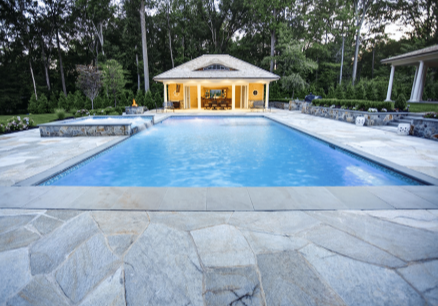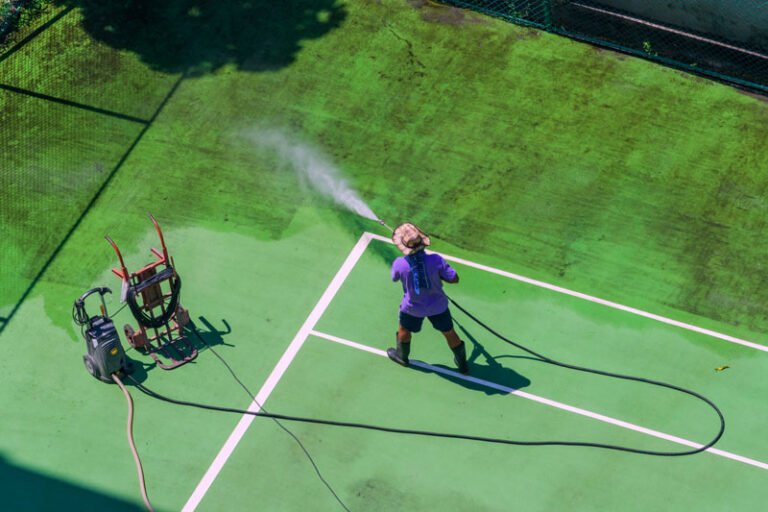Honed Concrete Around Pool: The Stylish, Safe, and Smart Choice for Outdoor Living
Introduction to Honed Concrete Around Pools
The modern backyard has evolved from a simple green space into a private oasis, where comfort, design, and safety are blended to create an outdoor sanctuary. At the center of many of these spaces lies a swimming pool—a place of relaxation, recreation, and visual appeal. However, one element that plays a crucial role in enhancing both the function and style of this space is often overlooked: the surface that surrounds the pool.
Among various surfacing options, honed concrete around pool areas stands out as one of the most elegant and practical solutions available today. Its sleek appearance, non-slip finish, and durability make it a top choice for homeowners, designers, and landscape architects alike.
In this detailed guide, we explore what honed concrete is, why it’s ideal for pool surrounds, how it’s installed, its benefits, design options, and what you should know before choosing this finish for your pool area. If you’re ready to combine beauty, safety, and performance, honed concrete around pool is an option worth serious consideration.
What is Honed Concrete?
Honed concrete is a type of decorative concrete finish achieved by grinding down the top layer of a concrete surface using specialized tools until a smooth, matte appearance is revealed. Unlike polished concrete, which is highly reflective, honed concrete maintains a non-glossy, slip-resistant texture that is ideal for outdoor use.
The honing process removes surface imperfections and exposes some of the aggregate (stones or pebbles within the concrete), resulting in a refined and modern look. The degree of exposure and smoothness can be customized based on aesthetic preferences.
When used around pools, honed concrete strikes a perfect balance between visual sophistication and essential safety features.
Why Choose Honed Concrete Around Pool Areas?
1. Non-Slip and Safe
The biggest concern when choosing materials for pool surrounds is safety. Wet surfaces increase the risk of slips and falls. Honed concrete offers a subtle texture that provides excellent grip underfoot—even when wet—making it one of the safest options for poolside areas.
2. Comfortable Underfoot
Honed concrete remains cool to the touch compared to darker stone or tile materials, even in direct sunlight. Its smooth, even surface is comfortable to walk on barefoot, reducing the likelihood of stubbed toes or foot fatigue.
3. Minimal Maintenance
Maintaining honed concrete is easy. A sealed surface resists algae, mold, chlorine, and salt—common elements found in pool environments. Regular cleaning with a hose and occasional sweeping are typically all that’s needed to keep the surface looking its best.
4. Aesthetically Versatile
Whether you’re designing a sleek, modern retreat or a rustic natural space, honed concrete can be customized to suit your vision. It comes in various colors, aggregate exposures, and border finishes, blending seamlessly with any landscaping or architectural style.
5. Long-Lasting Performance
Unlike timber decking or pavers, honed concrete won’t warp, rot, or shift over time. Its structural strength makes it resistant to heavy foot traffic, pool chemicals, UV rays, and seasonal temperature changes.
See Also: How Tech Is Powering Remote Work
The Installation Process of Honed Concrete Around Pools
Installing honed concrete is a highly technical process that should be carried out by professionals with experience in decorative concrete finishes. Here’s what the process generally looks like:
Step 1: Planning and Design
The contractor works with the homeowner or designer to decide on layout, edge detailing, color selection, and aggregate type. It’s important to plan for adequate drainage and any necessary expansion joints.
Step 2: Pouring the Concrete
Concrete is poured around the pool area according to the design specifications. Reinforcement such as steel mesh may be added for extra strength, especially in large areas or where the soil is less stable.
Step 3: Curing
After pouring, the concrete must cure for several days to achieve its full strength. This ensures that the surface will not crack or weaken during the honing process.
Step 4: Honing the Surface
Once cured, the surface is ground down using industrial grinders with diamond abrasives. The depth of the grind will determine how much aggregate is exposed and how smooth the finish will be. Multiple passes are made, starting with coarse grits and moving to finer ones.
Step 5: Cleaning and Sealing
The surface is cleaned thoroughly to remove dust and slurry, then sealed with a penetrating or surface sealer. This sealer protects the concrete from water absorption, staining, and chemical damage, while also enhancing color and appearance.
Design Options for Honed Concrete Pool Surrounds
One of the greatest strengths of honed concrete is its adaptability to various design themes and styles. Here are several customizable aspects:
- Aggregate Type and Exposure
You can select different aggregates such as granite, quartz, river pebbles, or recycled glass for the embedded material. Full exposure creates a striking stone appearance, while light exposure keeps the finish more subtle and monochromatic.
- Color Variations
Concrete can be integrally colored during the mixing stage or tinted post-pour using stains or dyes. This allows you to create earthy tones, modern greys, or even soft beach-inspired palettes that complement your pool design.
- Edge Detailing
Edges can be chamfered, bullnosed, or left sharp for a more architectural finish. Borders or banding in contrasting tones can be added for a framed effect.
- Finishing Touches
To enhance the design, homeowners may choose to integrate lighting, drains, or stepping features directly into the honed concrete surface. These details elevate functionality and visual appeal.
Benefits of Honed Concrete Compared to Other Pool Surround Materials
- Versus Pavers
While pavers are common around pools, they tend to shift or settle over time, creating uneven surfaces and potential trip hazards. Weeds or moss may also grow in the gaps. Honed concrete offers a seamless finish that requires less maintenance and provides greater durability.
- Versus Timber Decking
Timber can splinter, fade, and rot when exposed to water and sunlight over time. It also requires regular staining or oiling. Honed concrete, on the other hand, offers the natural look many desire but with none of the maintenance headaches associated with wood.
- Versus Natural Stone
Stone can be costly to install and may heat up excessively under the sun. Honed concrete mimics the aesthetic of natural stone while remaining cooler and more cost-effective.
Long-Term Maintenance of Honed Concrete Around Pools
Though honed concrete is known for its low-maintenance nature, a few proactive steps can extend its life and preserve its appearance:
- Routine Cleaning
Use a garden hose or soft-bristle broom to remove leaves, dirt, and pool chemicals. For stains or buildup, a mild pH-neutral cleaner can be applied.
- Resealing
Depending on usage and exposure, resealing may be required every 2 to 5 years. This keeps the surface protected against water penetration, UV damage, and staining.
- Prompt Repairs
If you notice any chips or surface imperfections, addressing them early can prevent larger issues. Small cosmetic repairs can usually be handled without redoing the entire area.
Environmental Benefits of Honed Concrete
In an age of environmentally conscious design, honed concrete presents some key green advantages:
- Durability reduces the need for replacement and waste.
- Low VOC sealers are available for eco-friendly protection.
- Locally sourced aggregates can be used to reduce transportation emissions.
- Reflective finishes reduce heat absorption, contributing to cooler outdoor spaces.
These attributes make honed concrete not only a smart design choice but also a sustainable one.
Final Thoughts: Is Honed Concrete Right for Your Pool?
If you’re looking for a surfacing material that offers unmatched elegance, comfort, safety, and performance, honed concrete around pool areas is one of the best choices available. It delivers a refined aesthetic that elevates your backyard without sacrificing practicality.
Its non-slip finish, durability, and customizable appearance make it an investment that not only enhances your property’s value but also transforms the way you experience outdoor living.
When installed by skilled professionals and maintained with care, honed concrete becomes more than just a surface—it becomes an integral part of your outdoor lifestyle.
To explore high-quality honed concrete solutions and professional installation, discover more about honed concrete around pool and turn your dream pool area into a stunning reality.






